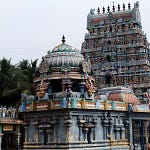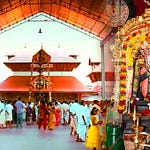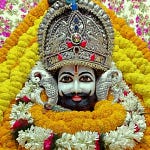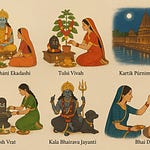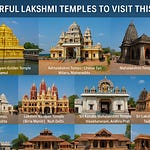Mathura and Vrindavan, often referred to as the twin abodes of Lord Krishna, are not just geographical locations but vibrant living testimonies to ancient history, rich cultural heritage, and deep spiritual devotion. Nestled in the heart of Uttar Pradesh, India, these sacred towns have been the epicenter of Krishna devotion and the Bhakti movement for centuries. This article delves into their storied past, the significance they hold in Hinduism, and the myriad religious sites, rituals, and cultural practices that continue to draw millions of pilgrims every year.
Historical Background
Mathura: The Birthplace of Divine Love
Mathura is revered as one of the oldest cities in India, with roots extending back over 5,000 years. Celebrated as the birthplace of Lord Krishna, it is mentioned in ancient scriptures such as the Mahabharata, the Puranas, and various Vedic texts. Historically, Mathura has witnessed the ebb and flow of empires—from the Mauryas and Kushans to the Guptas and Mughals—each leaving its mark on the city’s cultural and architectural landscape.
The legendary narrative tells that Krishna was born in a prison cell within the confines of the ancient fortress known as Kansa Qila, where his parents, Devaki and Vasudeva, were held captive. Despite numerous invasions and periods of decline, Mathura has always re-emerged as a beacon of spiritual resilience and cultural vibrancy.
Vrindavan: The Enchanted Playground of Krishna
While Mathura lays claim to the miraculous birth of Krishna, Vrindavan is celebrated as the playground where his childhood pastimes and divine leelas unfolded. Vrindavan is steeped in myth and lore—its serene groves, sacred ponds, and ancient temples echo the playful tunes of Krishna’s flute and the joyous laughter of the gopis (cowherd maidens). The town’s spiritual aura was significantly enhanced during the 16th century by stalwarts of the Bhakti movement such as Chaitanya Mahaprabhu, Vallabhacharya, and the Goswamis, whose teachings continue to inspire devotion and artistic expression.
Spiritual and Cultural Significance
Mathura and Vrindavan are far more than historical landmarks—they are living, breathing centers of devotion and cultural renaissance. Their significance can be summarized as follows:
Divine Legacy: Every stone, ghat, and temple in these towns is imbued with the legends of Krishna, symbolizing eternal love, compassion, and divine play.
Heart of the Bhakti Movement: The devotional practices and artistic expressions originating from these regions have inspired countless poets, musicians, and philosophers, leaving an indelible mark on Indian culture.
Pilgrimage Destination: Millions of devotees and spiritual seekers from around the world visit these sacred lands to experience the palpable aura of divinity, partake in ancient rituals, and seek solace and inspiration.
Renowned Temples and Sacred Sites
In Mathura
Shri Krishna Janmabhoomi Temple
Significance: Believed to be the exact site of Krishna’s birth.
Highlights: The temple complex includes the prison cell where Devaki and Vasudeva were confined, and it hosts grand celebrations, especially on Janmashtami (Krishna’s birthday).
Dwarkadhish Temple
Significance: Dedicated to Krishna in his form as Dwarkadhish, meaning the “King of Dwarka.”
Highlights: Known for its intricate Rajasthani-style architecture and vibrant festivities that attract devotees throughout the year.
Gita Mandir
Significance: Unique for having the entire 700 verses of the Bhagavad Gita inscribed on its walls.
Highlights: Its peaceful ambiance makes it a haven for meditation and reflection.
Vishram Ghat
Significance: A sacred ghat on the banks of the Yamuna River where Krishna is said to have rested after his victory over Kansa.
Highlights: Devotees perform ritualistic dips and evening aarti, immersing themselves in the spiritual energy of the river.
In Vrindavan
Banke Bihari Temple
Significance: One of Vrindavan’s most venerated shrines, this temple exalts Krishna in his charming “Banke Bihari” form.
Highlights: The deity’s idol is revealed at specific intervals during the day, adding to the temple’s mystical allure.
Radha Raman Temple
Significance: One of the oldest temples in Vrindavan, established by the revered saint Gopala Bhatta Goswami.
Highlights: The self-manifested idol of Krishna is a focal point of intense devotional energy and timeless spiritual lore.
Prem Mandir
Significance: A relatively modern architectural marvel dedicated to the divine couple, Radha-Krishna, as well as Ram-Sita.
Highlights: Its intricate carvings and luminous night-time presentations make it a visual and spiritual delight.
Nidhivan
Significance: Considered a mystical abode where, according to legend, Krishna performs the Raas Leela (divine dance) every night.
Highlights: Devotees believe that the enchanting energies of Nidhivan make it impossible for anyone to remain after sunset.
Rituals, Satsangs, and Devotional Practices
The daily life in Mathura and Vrindavan is a tapestry of rituals and spiritual practices that foster a deep connection with the divine:
Daily Aartis and Pujas:
Early morning Mangala Aarti and evening Sandhya Aarti are performed in temples and ghats, where the rhythmic chants and the glow of oil lamps create an atmosphere of divine surrender.Bhog Offerings:
Devotees prepare elaborate meals, which are offered as prasad (sacred food) to the deities, symbolizing the sharing of divine grace.Kirtans and Bhajans:
Continuous singing and recitation of Krishna’s names resonate throughout the towns, especially during the night hours, inviting spiritual upliftment and communal bonding.Satsangs and Spiritual Discourses:
Regular gatherings, or satsangs, are held where spiritual leaders and devotees engage in discussions about Krishna’s pastimes, life lessons, and the deeper meaning of existence. These discourses often include the recitation of scriptures, storytelling, and shared meditations.Parikrama (Circumambulation):
Pilgrims undertake ritualistic circumambulations of holy sites, such as Govardhan Hill, as an expression of devotion and penance.
Celebrations and Festivals
Festivals in Mathura and Vrindavan are grand affairs, blending fervor with age-old traditions:
Janmashtami:
Celebrating Krishna’s birth, this festival features fasting, elaborate rituals, and midnight ceremonies re-enacting the divine birth.Holi:
The festive spirit of Holi reaches its zenith here—with Vrindavan’s exuberant celebrations and Barsana’s famous Lathmar Holi (where traditional playfully mock battles are re-enacted) attracting visitors from across the globe.Radhashtami:
The birth anniversary of Radha, Krishna’s divine consort, is observed with equal fervor, reinforcing the ideals of love and devotion.Govardhan Puja:
Devotees commemorate Krishna’s miraculous lifting of Govardhan Hill by offering a mountain of food (Annakoot) to the deity.Yamuna Aarti:
Evening prayers along the banks of the Yamuna provide a serene setting for spiritual reflection and communal participation.
Beyond Temples: Cultural and Culinary Delights
A visit to Mathura and Vrindavan is not just a spiritual sojourn—it is also an immersion into rich cultural traditions:
Culinary Experiences:
Savor local delicacies such as peda, kachori, lassi, and various street foods that reflect the region’s culinary heritage.Art and Music:
Traditional performances of Ras Leela, classical music recitals, and folk dance dramatizations bring the divine narratives to life.Handicrafts and Souvenirs:
The bustling local markets offer a treasure trove of Krishna idols, Tulsi beads, and vibrant paintings, allowing visitors to take a piece of this spiritual legacy home.
Mathura and Vrindavan continue to enchant and inspire countless individuals with their timeless blend of history, devotion, and cultural richness. They are living legends—a place where every temple tells a story, every ritual reaffirms faith, and every festival revives the eternal bond between the divine and the devotee. Whether you are a pilgrim on a spiritual quest or a traveler seeking to understand the profound layers of Indian heritage, these sacred towns offer an immersive experience that transcends time and touches the soul.
Jai Shri Krishna!




